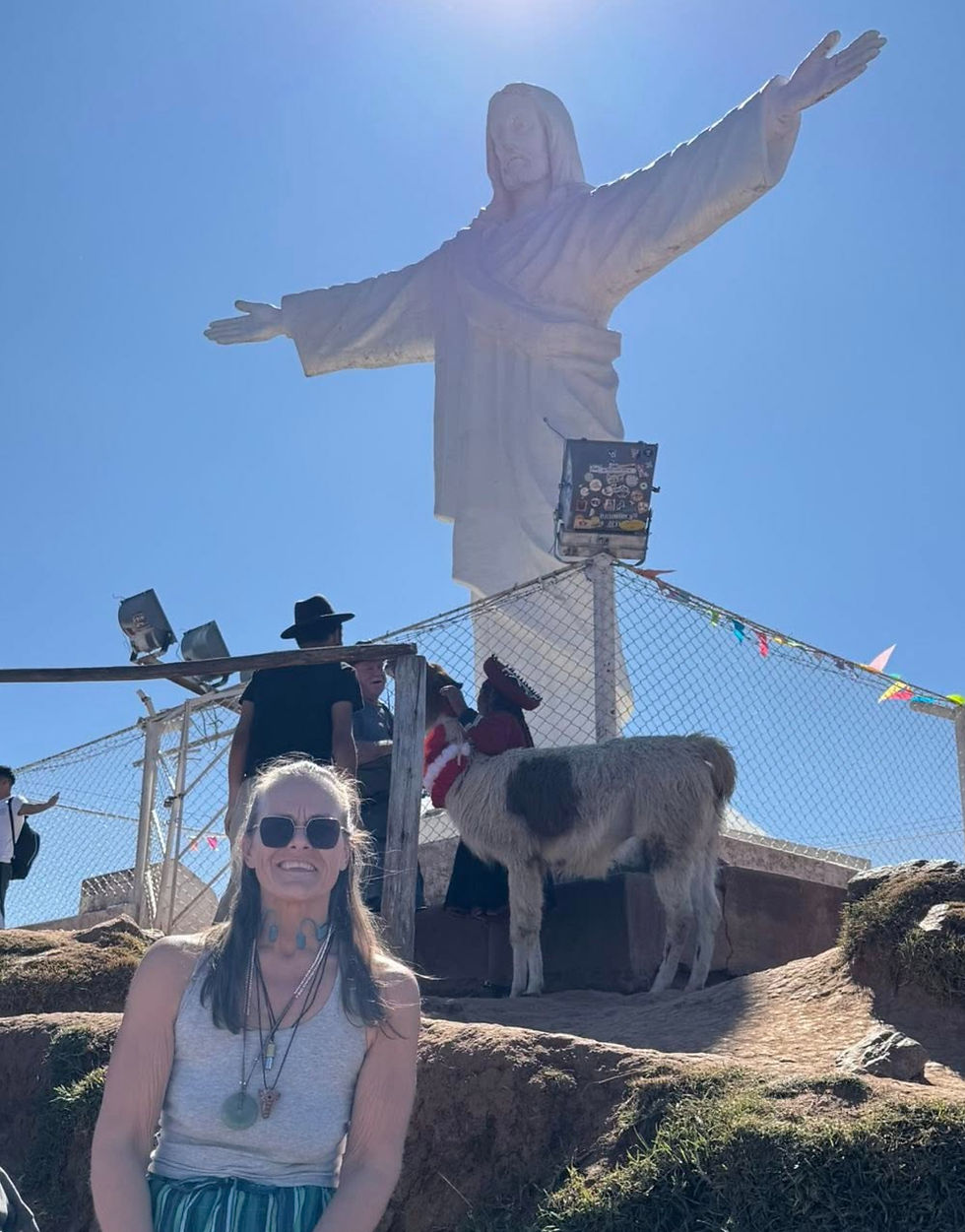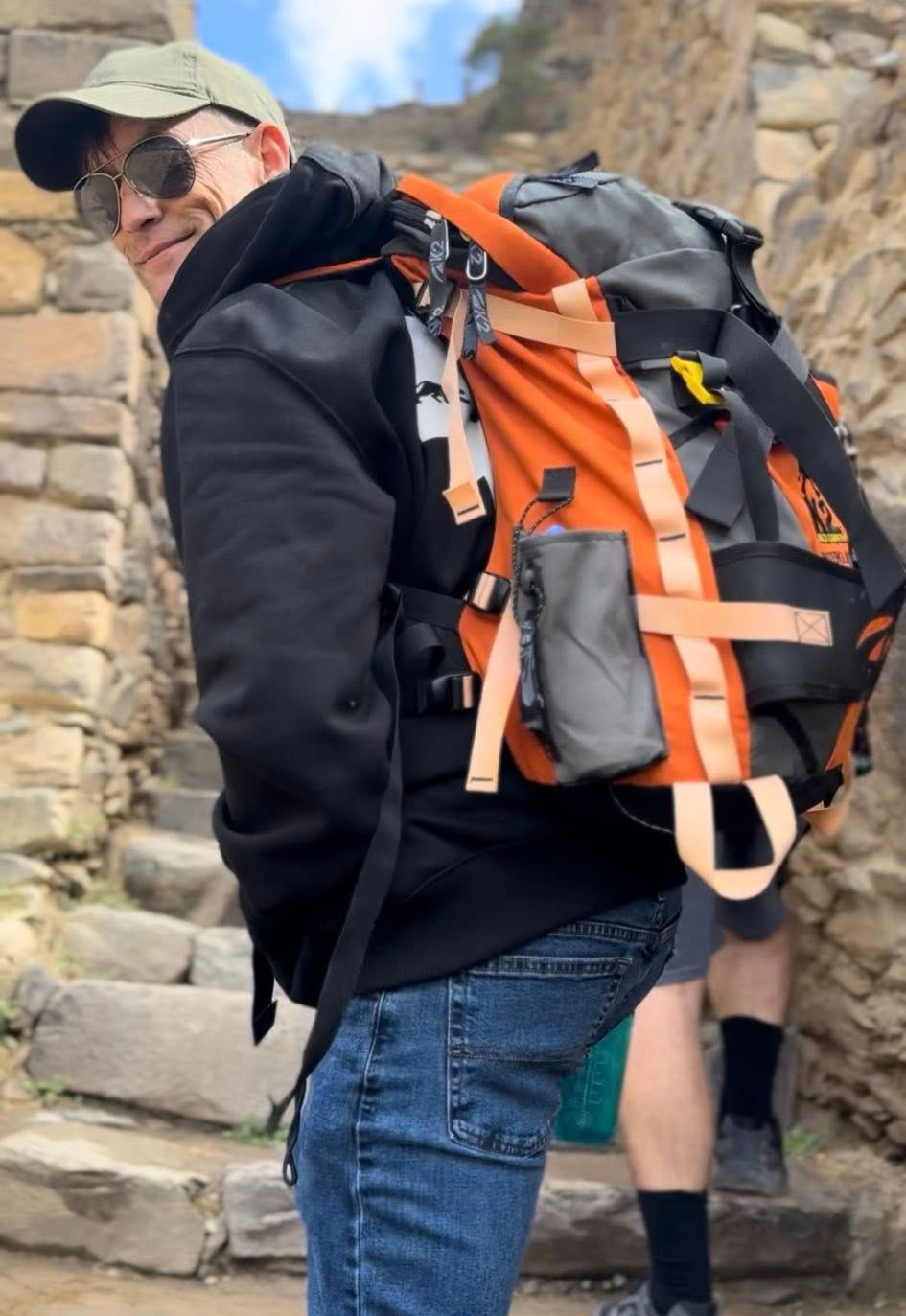The Christian / Spirituality Divide: A Rainy Day Reflection (Video Blog)
- Soul Journey
- Aug 2, 2025
- 5 min read
Updated: Dec 30, 2025
There’s a tension running quietly through the spiritual lives of many modern believers—one that rarely gets a pulpit mention, but lives in the silence between the verses, in the unasked questions, and in the hearts of those whose faith has moved beyond doctrine and into direct experience.
This is the divide between Christianity as it’s practiced today and spirituality as it was lived by Jesus himself.
Most of us raised in the church were taught the narrative arc: Jesus was born, performed miracles, was crucified, resurrected, and ascended. But when it comes to his development—his becoming—the trail goes cold. Aside from a few glimpses of his childhood and a single account of him teaching in the temple at twelve, the Bible is quiet on the formative years of the man who would one day calm storms, raise the dead, and heal with a touch.
This silence has always intrigued me. Because for a man to walk into a ministry at thirty and embody such grace, wisdom, power, and precision… something had to happen in the meantime. Something sacred. Something spiritual.
It’s widely believed—and often quietly accepted in academic and mystical circles alike—that Jesus was a mystic. That he not only studied the Torah, but also learned through experience, through silence, through nature, and through direct communion with God. He didn’t just preach faith—he embodied it. And his works were not limited to metaphor. He laid hands. He breathed life. He knew things. His miracles weren’t just teachings in disguise—they were physical, tangible acts of divine intelligence channeled through human hands.
A Christianity Without Power
And yet, today, many churches avoid these topics altogether. The gifts of the Spirit are too messy, too subjective, too difficult to standardize or explain. We honor Christ’s compassion, his sacrifice, his obedience to the Father—but rarely do we sit with what it means to live as he lived. To do what he did. We dissect his parables but not his process. We emulate his morals but not his mystery.
And that’s where the divide begins.

For some of us, when we step into healing work or intuitive listening or deep energetic alignment with another soul, we enter a space that scripture alone doesn’t fully explain. And we’re left with a choice: deny our experience, or follow it.
I chose the latter.

Spiritual Practice at the Edge of Tradition
When I began working with the human body—really working, day after day, year after year—I started noticing patterns. Patterns that weren’t in any anatomy book, but were incredibly consistent. I could place my hands on someone and know something they hadn’t said. I’d find the spot on their body that held an old trauma—a horse kick from childhood, a car accident from decades back—and feel it begin to release beneath my fingers. Clients would burst into tears, or laughter, or silence. And over time, I started mapping these things. Not in the traditional Western way, but in the way Jesus might have done: by listening deeply, by following the Spirit, by trusting the unspoken.
It was in Eastern and shamanic traditions that I found language for what I was experiencing: chakras, meridians, auric fields, energetic blockages. They didn’t conflict with my Christianity—they filled in the blanks. They gave me tools. They gave me grounding. They gave me permission to explore a realm that the Church rarely acknowledges, yet the Gospels make impossible to ignore.
And more importantly—they worked.
That’s all I can say. They worked. They brought healing. Peace. Clarity. Liberation. Not because of the traditions themselves, but because they honored the principle of what Jesus did: touch with intention, listen without ego, love without limit, and trust the unseen.
The Fear of the Fringe
Unfortunately, there’s not a lot of room in Christian circles for this kind of work. Small groups don’t often welcome discussions about energy fields or intuitive healing. Bible studies prefer historical analysis to direct spiritual experience. It’s safer to quote Paul than to question why Jesus chose touch as his primary method of teaching.
But this too mirrors his own story.
Jesus wasn’t welcomed in the religious institutions of his day. He taught in the streets, on hillsides, from boats. He didn’t ask for permission from the synagogue. He was the temple. And when he healed, it was messy and miraculous and deeply human. There were no disclaimers. No credentials. Just faith and presence and divine alignment.
So when I find myself sitting with a client, feeling that same alignment move through my hands and into their brokenness, I don’t wonder anymore if it’s Christian. I know it is. Because it’s the same Spirit. It’s the same power. It’s the same invitation to trust in something greater than ourselves.
The Path Forward
I’m still Christian. Deeply. Unshakably. But I’m no longer willing to limit that faith to the confines of acceptability. Because something is happening here—something undeniably real. And if it can’t be spoken of in the sanctuary, then maybe the sanctuary has lost its way.
Perhaps the real work of a modern Christian is to step outside the institution—not in rebellion, but in reverence. Not to abandon the Church, but to remind it of its power. To reclaim the birthright of spiritual authority that Christ gave to his followers when he said: “You will do even greater works than these.”
It doesn’t get more direct than that.
So maybe this is the lesson on a rainy Saturday. Maybe being a Christian in the truest sense is less about fitting in, and more about following through. Not just with belief, but with embodiment. Not just with study, but with service. Not just with rules, but with relationship—with Spirit, with people, with the mystery in between.
Because if Jesus really showed us the Way, then the Way may not always look like a pew, a sermon, or a chapter-and-verse explanation.
Sometimes the Way looks like a quiet room, a hurting body, and a set of hands willing to listen.
And maybe—just maybe—that’s the holiest place of all.
For the seekers, the wanderers, the bodyworkers, the intuitives, and the Jesus-followers who find themselves on the fringe: you are not alone. You are walking a road well-trodden by saints and sages alike. Keep going.

About the Authors
Steve Wooten, M.Ed, LMT, and Pepper Wooten, CLC, ordained minister, and shamanic apprentice, are the co‑founders of Soul Journey Relaxation Retreats in Melbourne, FL, where they support individuals in integrating faith, embodied presence, and soulful reflection into everyday life. With Steve’s background in therapeutic bodywork, somatic coaching, and nervous‑system‑aware healing and Pepper’s experience in life coaching, ordained ministry, and spiritual apprenticeship, they help people explore the intersections of Christian spirituality, embodied awareness, and personal transformation. Their holistic services — including massage therapy, somatic sessions, breathwork, Reiki energy healing, and spiritually rooted guidance — support individuals across Brevard County and beyond in finding grounded peace, deeper clarity, and a lived sense of sacred presence that resonates in both quiet reflection and active life.




















